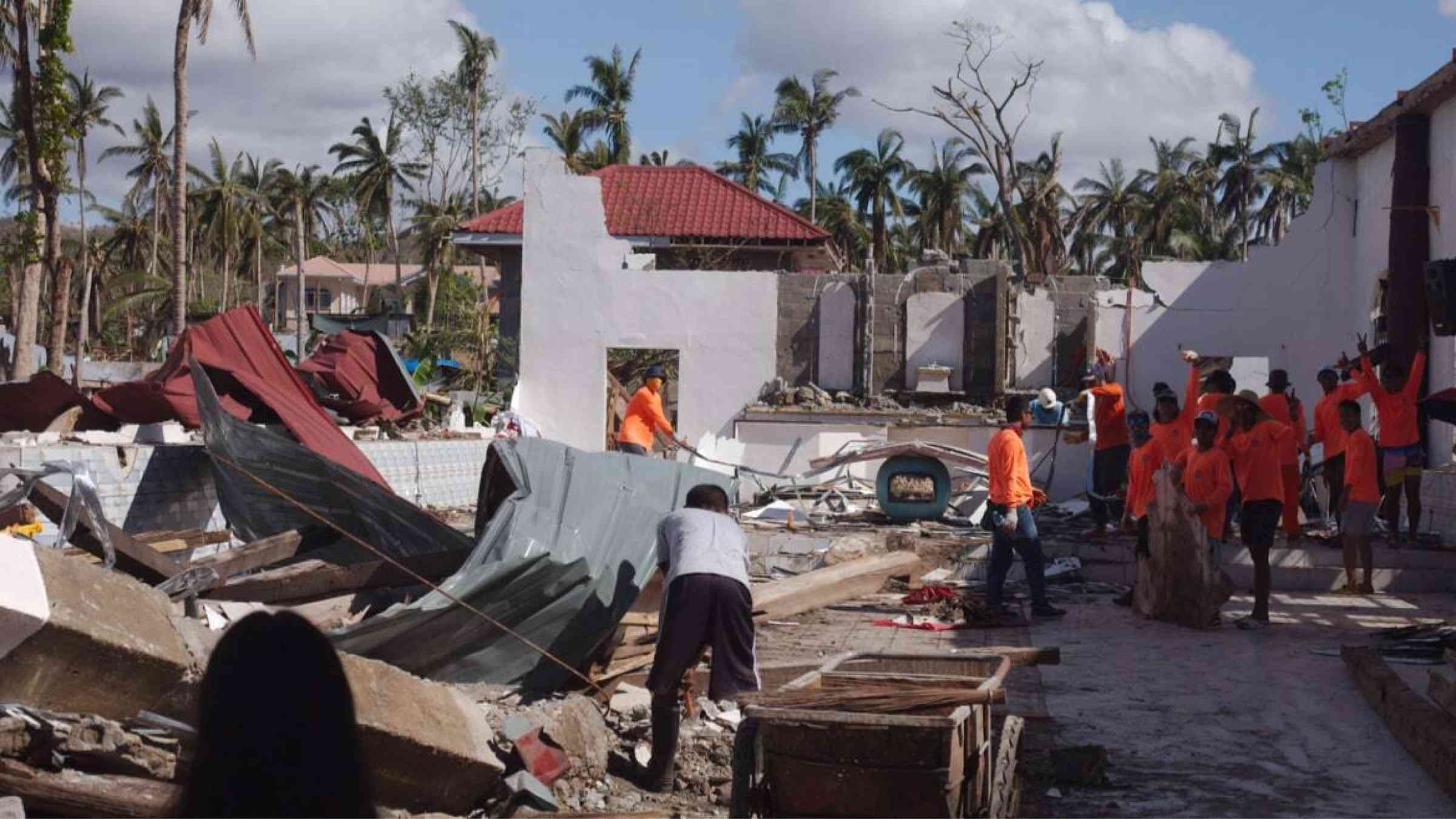The Philippines is “Ready to Rebuild” in the aftermath of Typhoon Rai

The year 2021 ended on a difficult note for millions of Filipinos as Typhoon Rai, locally known as Odette, battered the southern and central regions of the Philippines. The country has experienced disasters such as typhoons and earthquakes with increasing frequency and magnitude over the past decade. Against this backdrop, building preparedness and resilience is needed more than ever.
Most countries struggle with recovery and reconstruction in the aftermath of large-scale disasters. The Philippines experienced this with Typhoons Ketsana (2009) and Haiyan (2013). In 2013, I was an official at the Office of the President tasked to coordinate the Typhoon Haiyan recovery efforts of the Philippine government. I can still recall how we scrambled to prepare the framework and templates, identify the priority sectors, realign fund sources, organize the recovery clusters, consult the affected communities, and craft policies to quickly develop a comprehensive recovery plan.
I could not forget the challenges in coordinating with hundreds of stakeholders – ministries, local governments, private sector partners, civil society and international organizations. It was even more heartbreaking to visit the provinces and cities and require local officials to submit their recovery plans while they were still heavily pre-occupied with disaster response and relief operations.
My key takeaway from the experience was that we need to develop a “playbook” to help the government, stakeholders, and affected communities prepare, respond, and recover from disasters better. At the same time, we need to build the capacity of local governments who are the primary responders on the ground to prepare for recovery even before a disaster happens.
Building on the lessons from Haiyan, we explored the idea of developing a program focused on pre-disaster recovery planning. This paved the way for Ready to Rebuild (R2R), a capacity building program designed for governors, mayors, disaster risk management officers, planners, and budget officers.
The R2R Program is jointly developed and implemented by the World Bank and the Philippine government through the National Disaster Risk Reduction and Management Council and the Office of Civil Defense. This is funded by the Global Facility for Disaster Reduction and Recovery (GFDRR) and the Japan-World Bank Program for Mainstreaming Disaster Risk Management in Developing Countries.
The R2R Program provides the “how” — how to prepare people, communities, and local governments to be more resilient and ready to respond and recover from disasters better and faster . It provides tools, ready templates, and practical solutions to address disaster recovery issues and bottlenecks. Participants learn from technical experts, practitioners, and other local officials on topics such as:
- Science-based and risk-informed recovery planning using the Philippines’ GeoRiskPH integrated multi-hazard database;
- Developing a responsive pre-disaster and post-disaster recovery framework;
- Identifying key stakeholders, institutional arrangements, and implementation modalities; and
- Preparing local disaster risk financing strategy to fund recovery and reconstruction.
At the end of the program, the participants have to complete three outputs that they can integrate into their recovery plans and implement when struck by disasters, including:.
- Local pre-disaster baseline data. These are the needed information for evidence-based disaster response and recovery culled from local database. It speeds up the conduct of the damage and needs assessment after disasters.
- Local disaster risk financing strategy. This will guide the financing of disaster recovery and the identification of funding sources for projects to be implemented.
- Local pre-disaster recovery plan. This outlines the basic components needed for recovery. It can be updated based on the disaster impacts. This shortens the planning timelines and speeds up implementation of projects.
With local governments reeling from the impact of Typhoon Rai, the R2R Program helped ensure that there was no mad scramble to initiate the recovery process like in Typhoon Haiyan. The government leveraged the program to quickly support provinces and cities in developing their recovery plans, implement reconstruction projects, and leverage funding support. This complements the $200 million in disaster response and recovery support from the World Bank’s Fourth DRM Development Policy Loan with a Catastrophe-Deferred Drawdown Option (CAT-DDO 4) standby loan facility.
Local officials across the Philippines are eager to have these tools, as shown by their participation in the R2R Program. A total of 197 provinces and cities from all 17 regions in the country were trained, including those struck by Rai. This translates to 924 governors, mayors, and technical staff who are now ready to rebuild.
Nearly a decade after Typhoon Haiyan, the experience of Rai shows that it is possible to save lives and livelihoods when local governments have the tools they need to rebuild after a disaster – without delay. As the Philippines continues its journey to resilience, the World Bank stands ready to partner with the country to continue seeking better, tailored, and sustainable solutions.
